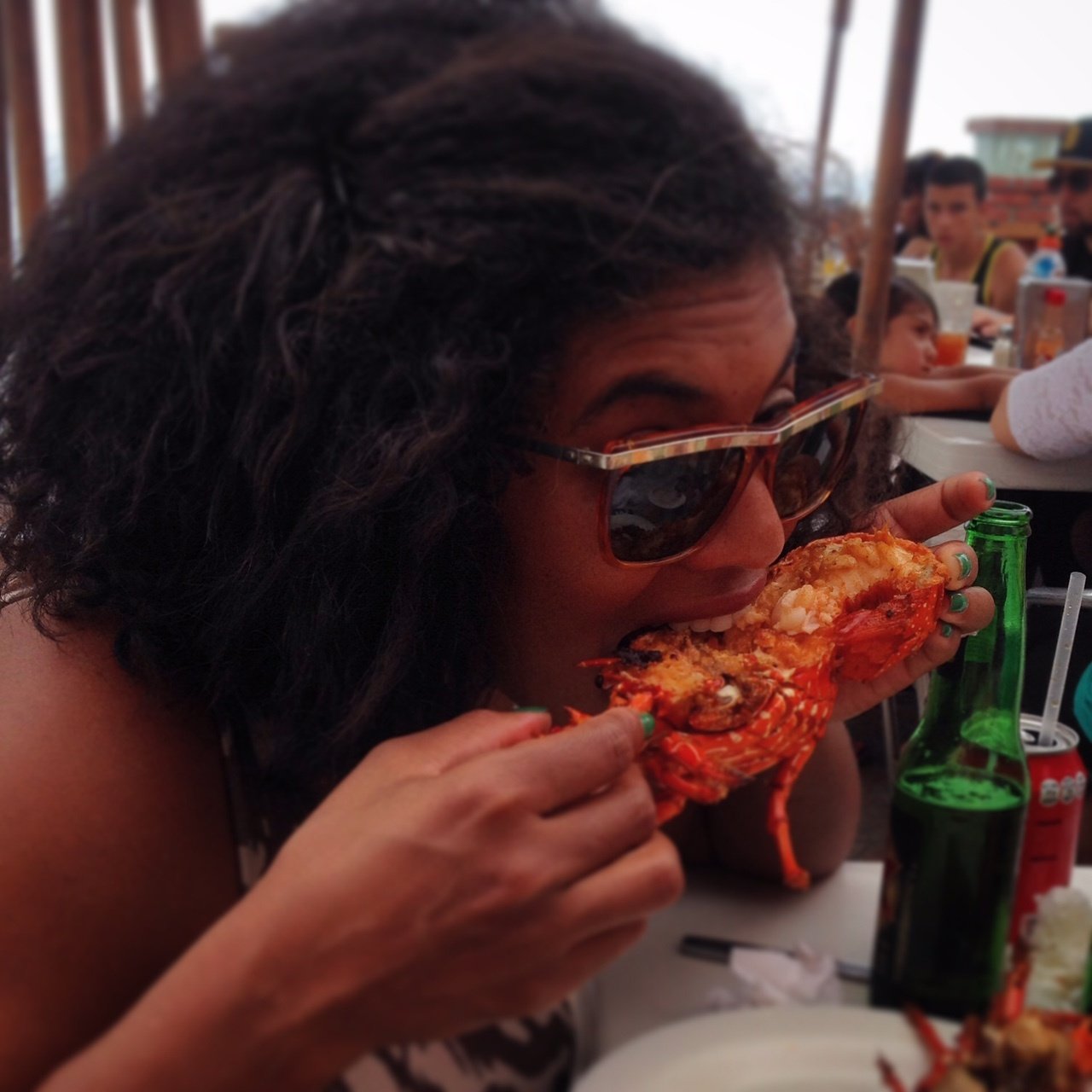Last week, viewers all over the United States bid a fond farewell to one of England’s favorite TV families. The highs and lows of Lord and Lady Grantham and the Crawley family have entranced a large portion of this nation for the past six years. With their glittering wardrobes, sumptuous abodes and decadent dinners, they put the lifestyles (not to mention the manners) of our own modern rich and famous to shame. So in honor of this epic farewell, I set out to create an historically accurate Downton Abbey-inspired dinner worthy of Lord and Lady Grantham!
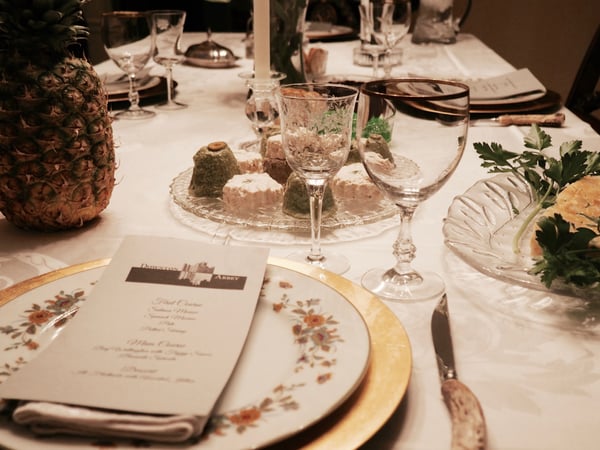
Dining at the end of the Edwardian Era, where we first meet our illustrious family, was a multi-course, formal affair serviced by a full-time staff and governed by strict rules for seating, eating and conversation. The most basic table would be set by the under-butler or footman with fresh flowers, fruits and nuts to be consumed for dessert and an array of meticulously placed glassware and silver. Guests would enjoy a cocktail before being escorted into dinner where they would be seated in order of importance. Dinner would typically consist of eight to eighteen courses and might last for several hours! Unfortunately my butler, under-butler and footman were all out for the evening so my mother-in-law set the table. Shockingly, the cook and kitchen maid were out as well, so our eighteen courses were cut down to about three!
First Course: Salmon Mousse, Spinach Mousse, Pate and Potted Shrimp
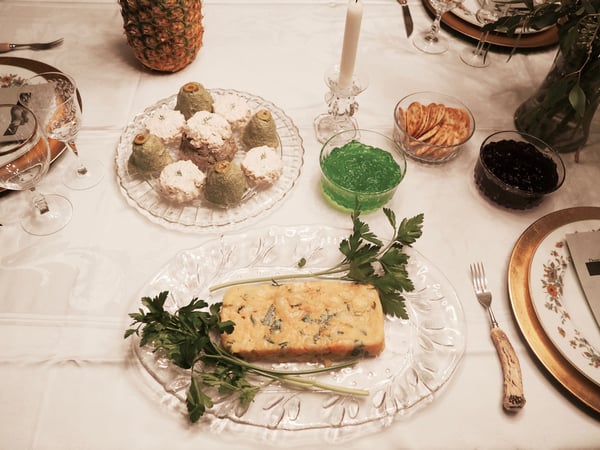
The foods consumed a hundred-odd years ago were just as varied and inventive as the foods we eat today, but with a greater focus on preserving and prolonging the life of perishables. Refrigeration was somewhat in use, but a love for mousses, pates and the elaborate preserved and potted meats of the Victorian Era still pervaded the dinner table. Fanciful molds, vibrant colors and creative presentations added to the whimsy of these tasty appetizers. This evening’s offerings included a mousse of salmon made with gelatin and formed in flower-shaped molds, a spinach mousse made in a tower-shaped mold, duck-liver pate, and potted shrimp. My husband was kind enough to pot the shrimp himself using freshly boiled whole shrimp tossed with fresh parsley, covered in clarified butter and chilled in a rectangular mold.
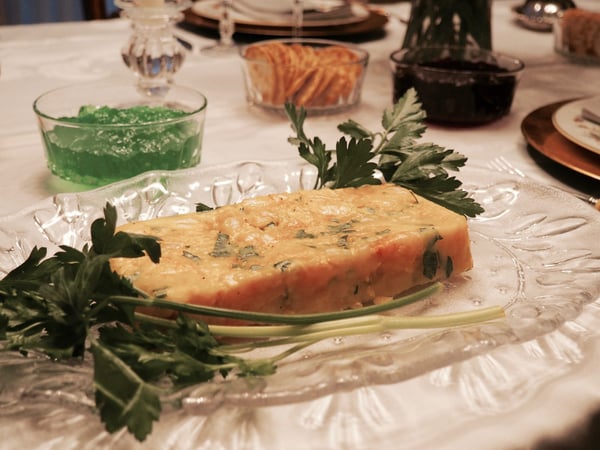
Second Course: Beef Wellington with Brussels Sprout Jelly and Roasted Brussels Sprouts
Unfortunately, the Beef Wellington was so popular that it was quickly consumed without me being able to get too many pictures. The history of the Beef Wellington is a little murky. Many believe it was created for the Duke of Wellington after he won the Battle of Waterloo in 1815. This decadent pastry encasement of tender beef filet, mushrooms, and pate certainly sounds like a dish fit for the man who trounced Napoleon (and it bears a suspicious resemblance to the popular French dish filet de bœuf en croûte), however Leah Hyslop, food historian and author of the column Potted Histories, argues that, although there is a long British history of meat wrapped up in pastry, a recipe for Beef Wellington does not make a historical appearance until 1903... in America! Perhaps Beef Wellington served at Downton Abbey would have been an import from the American-born Lady Grantham herself. I opted for individual servings, topping the 6-ounce seasoned and seared filet mignons with a saute of garlic, bacon, cremini and portobello mushrooms, and country pate, all chopped into a fine paste and wrapped in store-bought puff pastry. Fully prepared the night before and popped into a hot oven for about twenty minutes right before dinner--they were spectacular!
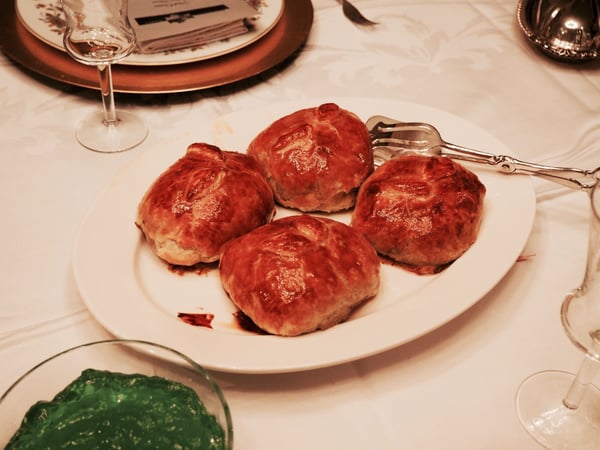
Vegetables would have been a necessary addition to these heavy, multi-coursed meals. Served in every form imaginable from soup to salad, roasted and steamed, as an ice or even as a novelty jelly. Tonight’s vegetable comes in jelly form because who could possibly pass up brussels sprout jello? Using unsweetened green gelatin mix, I swapped out plain water for the concentrated water left over from boiling a few brussels sprouts. The results: glistening green jello that smelled awful and tasted even worse! It seems some things are better left the way nature intende them, so we had roasted brussels sprouts with bacon too!
By the series finale of Downton Abbey, we are now well into the 1920s and the decadent dinners of the Edwardian Era are beginning to wane. Even at the great country estates like Downton, loss of servants and changing trends like the birth of the restaurant led to simpler meals that took much less time to make, serve and eat. With war on the horizon, a golden era of British cooking and dining faded into a glittering past. To commemorate this golden era, the final course...
Third Course: IIe Flottante
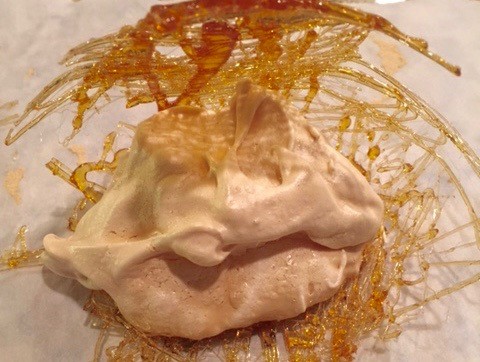
Ihave to admit a few things about the Ile Flottante, or “Floating Island.” Ile flottante is one of my favorite “old school” desserts. It consists of blobs of meringue islands floating atop a rich custard sea, often topped with fruit or sauce or sugary brittle and would have been one of the many French dessert imports that were all the rage. By the time dessert rolled around, myself and my illustrious dinner guests were well into the claret, champagne and brandy. We were also well into unbuttoning our pants, corsets, dinner jackets, etc. and settling in to watch the final episode of Downton Abbey. All I know is that at some point we ate all of the “flottante” and were nearly asleep by the time the “île” finished baking! So all I’ve got is a custard-less picture of a sugar-caged island (which was pretty tasty with coffee the next morning!).
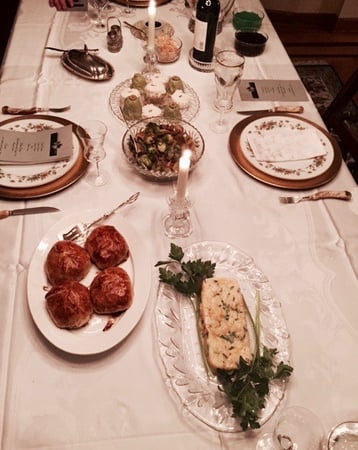
Thanks for coming with me on this culinary history adventure! Classic English cooking of this era was heavily influenced by the French with some houses employing very costly French chefs to enhance the prestige and elegance of their parties. The Chopping Block's Culinary Boot Camp, Sauce Boot Camp and Baking Boot Camp hands-on cooking classes are a great way to experience so many of the classic cooking techniques that have inspired European and American cuisine from the days of Downton to the present.


